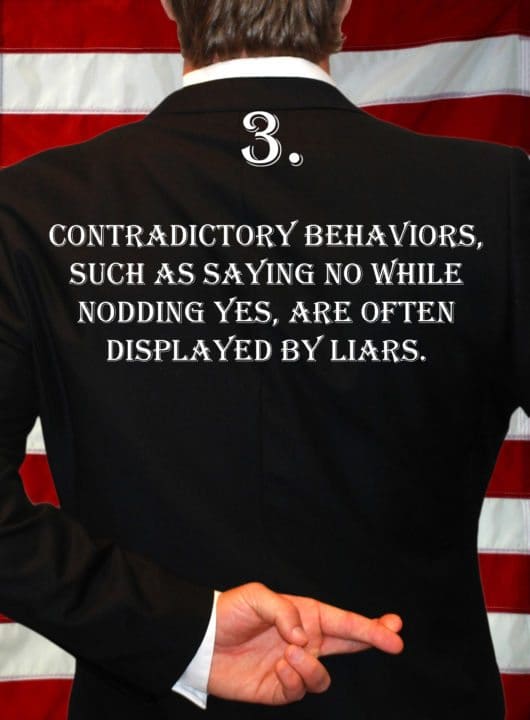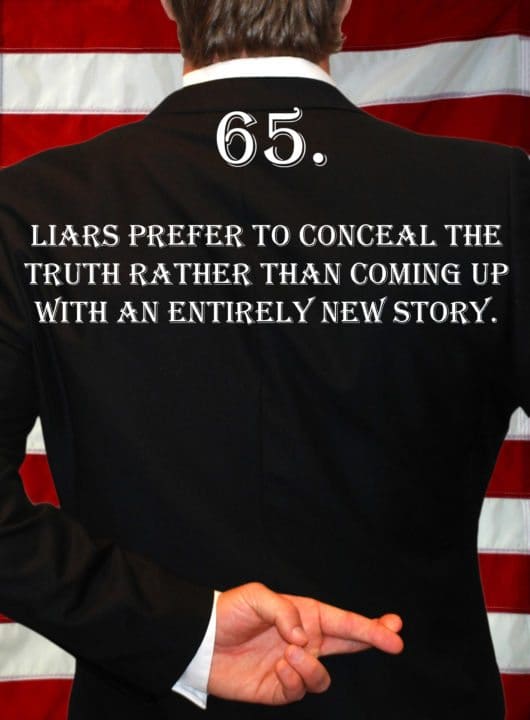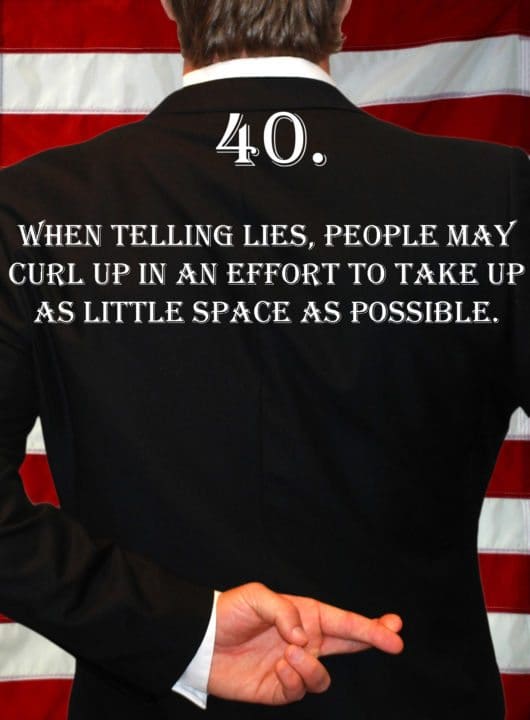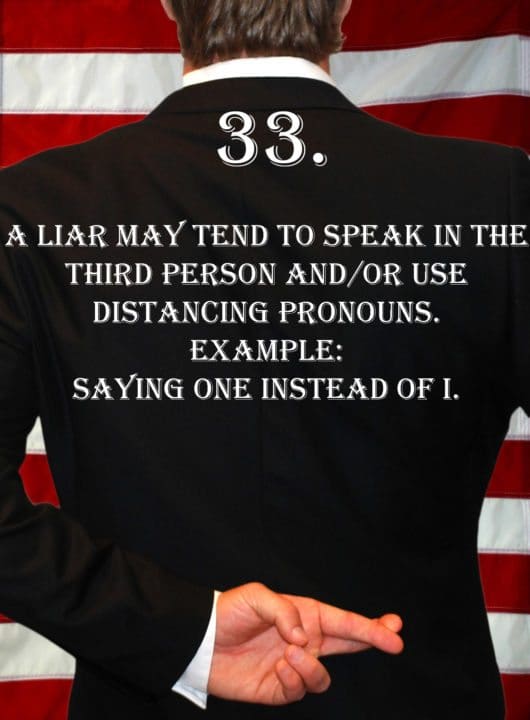
Deception Tip 3:
Contradictory behaviors, such as saying no while nodding yes, are often displayed by liars.
Listen To The Podcast!
E3 – Contradictory Behaviors – Deception Tips Podcast – Click Here To Subscribe
Podcast Transcript
Hello, and welcome to the Deception Tips Podcast, where you will learn amazing cues to detect deceit that will help you read people like never before. I’m your host, Spencer Coffman. Let’s get started.
Welcome to episode 3 of the Deception Tips Podcast. Last time, we went over how a person’s pupils may dilate. We talked about the meanings behind the actions of expanding or contracting pupils and how those actions may not always indicate deception.
It could be lighting, chemicals, or other environmental factors. However, when they are indicative of deception, there were 4 generalities that we talked about, 4 different meanings, that the expansion or contraction of the pupils may have.
Do you remember them? We didn’t specifically state the four meanings but we talked about them throughout the podcast. They are- dilating for a split-second, narrowing for a split-second, dilating for a little bit longer, and narrowing for a little bit longer and each one has a specific meaning and you need to be paying attention to all of them.
When pupils dilate for a split second, the person likes what they see. If they narrow for a split second, they don’t like what they see. Similarly, if they stay dilated for a little bit longer, then it’s a sign of a deeper emotion such as arousal or love and if they stay narrow for a little bit longer, then it is a sign of a deeper emotion such as hate or loathing. So when pupils get bigger, it’s a sign of attraction. They like it. When they get smaller, it’s a sign that they don’t like it. They’re not interested.
Keep in mind that pupils may react based on what someone is hearing or experiencing. It doesn’t have to be a sight. It’s not a visual field only. As long as someone’s eyes are open, they are seeing. So it may not be the sight that caused their pupils to move, it could’ve been something they heard as well, or something that was in their field of vision, or wherever their eyes moved whenever they were talking to or with someone.
Therefore, when pupils move and there are no environmental or chemical causes, then you can be sure that the person either likes or doesn’t like whatever is going on. It is something that is happening in their environment that stimulates pupil movement to tell you whether they like it or whether they don’t like it.
Now one important point to be made here is when they narrow or expand for a split second it’s a sign of the basic emotion and when it happens for a little bit longer, it’s a sign of the deeper emotion. And by a split-second and a little bit longer, we’re not talking about a big difference here.
This is something that happens very quickly. It might happen in a quarter of a second for the regular, basic emotion, and maybe a half or three-quarters of a second for the deeper emotion. Very rarely will they stay fully dilated, or fully narrowed, for an extended period of time. Rarely over a second, maybe two seconds total. If they are staying that big or that small, then you need to be aware of possible chemical or environmental factors.
Today we are going to talk about a different sign of deception that you probably experience on an everyday basis. In addition, this sign is a lot more noticeable and much easier to spot that than the movement of the pupils. It’s also pretty certain of deception even though there are some outliers where it might not be. But it’s a much easier sign to reason with, use, and master. So you should be able to get the hang of this one right away. Practically when we’re done with this podcast, you’ll start noticing.
There is a precaution, like all behaviors, it doesn’t always happen with deception. But it does happen a lot more with deception than not. So, again, beware of the outliers and keep an eye out for other deceptive signs that go along with this behavior because there ALWAYS be more than one sign.
Deception is always flowing through the body when anyone is telling a lie. Those truthful behaviors will come out because the unconscious is so truthful. So no matter what, there will be another sign. So even if you think you saw one, and question that you might’ve missed it, don’t worry, continue paying attention, put the heightened alert up, and keep watching, because if you were right, there will be another one.
With that, here is Deception Tip 3: Contradictory behaviors, such as saying “no” while nodding “yes” are often displayed by liars. Here it is again: Contradictory behaviors, such as saying “no” while nodding “yes” are often displayed by liars.
What does this look like? Usually, when a person is lying, they are consciously battling the truthful unconscious. We’ve talked about this before. When a lie happens, the conscious is what is telling the lie. A person is consciously stating this lie and inside they know what’s true, they know they are saying a lie.
So the unconscious is so truthful that it always will leak truthful behaviors, gestures, vocal slip-ups, et cetera. That’s their way of balancing. The unconscious always wants to tell the truth. It ALWAYS is fighting with the conscious.
Anytime there is a lie going on, it is a head-to-head battle. They’re butting heads like rams hitting on the sides of the fields in the mountains, back and forth. Who’s going to win? This is why the unconscious works so hard to leak truthful behaviors.
It’s so that it can feel better about allowing the conscious to lie. It expressed the truth by leaking the behaviors and the conscious expressed the lie. They both got what they wanted and there is a little bit of peace between them, at least for the time being.
Later on, when your conscience comes into play, you may be guilted into realizing that you told a lie. The unconscious is working, guilting the conscious, saying “You shouldn’t have done that.” That’s your conscience coming in.
Freudians call that the id, the ego, and the superego, but for now consider it the unconscious- the truthful, the conscious is more of the selfish/self-serving type of behavior. The conscious, the unconscious, are fighting between each other and they’re putting that sign-out.
This sign takes the form of a liar saying “no” and the unconscious blatantly nodding “yes.” Of course, it can also happen the other way around. The liar can say “yes” and the unconscious may blatantly shake the head “no.” It can happen with other affirmative or negative answers as well such as “yes, I did that,” or “no, I didn’t do it,” etcetera. Anything affirmative or negative can happen with this behavior. However, usually, it will happen with a direct yes-or-no question and the answer will usually be a direct “yes” or “no.”
This is because the conscious wants to tell a lie as quickly as possible. It wants to get it out. It knows there’s resistance. It knows it’s battling the unconscious. So if someone asks a yes-or-no question and the liar is planning on telling a lie, they’re going to answer “yes” or “no” right away because it’s easy, it’s quick and they get the lie out to get a little bit of peace between the battle that’s going on with the unconscious.
Even though this is going on with a lie, there are some instances that it may happen automatically where the person doesn’t even know that they are telling a lie. So you may see this behavior even when someone is telling the truth and we’ll talk more about it when we come back.
How would you like to really know what every body is saying? Understanding body language can help you in your career, your relationships, and everyday interactions. Subscribe to the Deception Tips email on spencercoffman.com today.
Sometimes a person can say “yes” or “no” to something and his or her head shakes the opposite direction, and that person may not be consciously lying to you. They may not have malicious intent.
This will happen when a person experiences something and unconsciously, they know what the truth is because they’ve experienced it, they’ve gone through it. They’ve unconsciously made a record of that event and, later on, when they’re asked about this event they consciously believe one thing, and the unconscious knows something else. The unconscious always knows the truth even if they don’t consciously remember it.
So when they’re asked, they may say one thing, what they consciously believe, whereas the unconscious knows it not to be the case and then will leak a deceptive behavior. They don’t know that they’re lying to you but still, they’re showing that deception. Then it’s up to you to decide whether or not they’re malicious and actively lying or whether they don’t understand what they’re doing. They believe they’re telling the truth and the unconscious knows better and leaks a gesture.
There are many reasons this can happen and, in reality, it isn’t considered a lie because the person isn’t lying to you. They think they’re telling the truth. It’s possible they may have forgotten. Maybe they didn’t pay attention. They never recorded the memory, etcetera. You hear this a lot with mentally unstable people.
Those types are declared innocent by reason of insanity. They didn’t understand what they were doing. You know what I’m talking about. It’s the court cases, the mass whatever, that they say “Oh, that person didn’t understand what they were doing so they can get off with it.” Well, we’re not talking about that.
People who are mentally insane are in a completely different category. And sure, some sane people may occasionally become a little crazy, they may snap, but this isn’t where I want to go with this. What you need to realize is that sometimes people can record a memory but not remember it consciously.
You’ve probably had this experience before. You went and did something at some point in your life and you went somewhere, you visited someplace and later on, when your spouse, your family, brothers, friends, whomever, are talking about it saying,
“Hey, remember when we did that one thing, at this place?” and you say “No, I don’t remember.” Or if they ask you about it and ask you “What was the name of whatever?’ and you say “I don’t know” and you leak the behavior, you didn’t consciously remember that.
But then, they kind of remind you. “Yeah, remember you did this and I did this and we went in here.” And then you kind of say “Oh yeah, that’s right! We did do that!” and now you remember. Five minutes ago when they were asking you about it you could’ve sworn you’d never done it. You didn’t consciously remember that but it was in your unconscious and when it was reminded of and prodded, the truth came out and you remembered.
You didn’t intentionally lie by saying you didn’t remember that but you lied nonetheless. You didn’t know you were lying, but your unconscious knew you were lying. So you weren’t lying with malicious intent, which means it really wasn’t a lie you just didn’t remember or you didn’t know.
Keep that in mind when you notice this behavior is that it might not always be somebody lying. So if it’s the case, it is possible for someone to shake their head “yes” and say “no” and not know they’re lying.
You need to remember that and anytime you see a contradiction between speech and behavior your red flag should go up. Your antennae need to be up. You need to be on alert and you should WATCH for deception because it’s by further questioning and deeper observation of their body language that you will be able to determine whether or not there is a conscious, malicious lie going on.
You can watch out for that. You can ask them a few extra questions and kind of prod it a little bit. Get to the bottom of the truth and see whether or not they know they’re lying or whether they didn’t remember.
The point is that it’s not important for you to notice the lying behavior and then call them out on a lie right away. It is your job to spot that behavior and then dig deeper and see the meaning behind that behavior. Are they lying? Are they hiding something?
Do they know what they’re doing? Etcetera. It’s up to you to use discretion to find the truth by watching and learning these behaviors. Not to go around calling people out on every deceptive behavior you see. And, as always, look for a cluster of behaviors because as they continue talking they will display more. They will always display more.
I want to thank you for listening to this podcast. I encourage you to share it with your friends, subscribe to the feed, follow the Deception Tips blog, and take a look at the books that I have available. And, as always, tune in next week for a new Deception Tip.
Video Transcript
Hey guys my name is Spencer Coffman thank you for watching the deception tips videos. They’re all about teaching you how to read people so that you can know if someone is lying to you.
Today we are going to talk about a deception tip called contradictory behaviors. And it is when someone does something and says something. They either need to go with each other, or they go against each other. And so that is very, very important when it comes to making sure someone is telling the truth. Because most of the time, people who tell the truth, they do so naturally. Which means their speech and their body language is cohesive. It goes together naturally.
However, when someone lies they may do things that contradict one another and that is the deception tip for today, so here it is.
Deception tip number 3: contradictory behaviors, such as saying no while nodding yes, are often displayed by liars.
Now, saying no and nodding yes. You see this all the time, and a lot of people don’t even think about it. So I can say no and my head just nodded yes. Or I can say yes, and my head could move no. That is something that you see in everyday life, but you don’t necessarily notice it. In addition, a lot of people may not really know that they’re lying. So the reason that this could happen is if I would say yes or no, and my head goes the other way. That’s a completely contradictory behavior. So that’s a problem when it comes to body language and truthfulness.
For example, if I’m talking, and you see my hands are moving with my voice. If my hand didn’t move with my voice, then that looks kind of funny. Someone says, “well, what’s wrong? What happened? Did the audio cut out? Did something not work properly?” It looks odd. It’s not normal.
So when you see someone who says yes and they shake their head no, that’s not normal. But when I say shake my head no, and I move my head in the no direction, that looks normal. So that is something that now that you noticed this, you will start to see that, “hey, it really does kind of look abnormal.” And when people lie, there’s a battle that goes on inside their head.
Now it’s really, it’s like there are two different entities, the unconscious and the conscious. But in reality, it’s all one. It’s all one brain. It’s your, your head. You have one mind, but you have two sides that are battling. The conscious is always trying to tell a lie. It’s trying to get away with something, it’s self-serving. The unconscious is pretty truthful. This is the part of your brain that leaks these nonverbal or these verbal cues, or leakage, that can help other people determine whether or not you’re telling the truth.
So in this example, if someone consciously says yes and non verbally they shake their head “no”, that would be the unconscious. That is a contradiction. Now they may not be consciously lying. For example, they may have forgotten. I may ask you “Did you go camping in 2010?” And you may say “no I don’t think so”, but you nodded yes. Well, unconsciously you may have remembered that you did go camping in 2010. That was a long time ago. But consciously, you didn’t remember that. Because it’s not something you think about all the time. Then later, you may say, “you know what? As I think about it, I did. I went camping in 2010 in September,” or something like that.
It’s something, that does not necessarily mean that someone is maliciously lying, it could mean that they just forgot. Maybe they forgot about something that you asked them and they say yes or no, and their head moves the other way. It doesn’t mean that you need to question and say, “hey, wait a minute. Your head just moved yes, and you said no. That means you’re lying.” Because they may not know they’re lying.
And in addition, if they are maliciously lying, if they are trying to get away with something, then you will see other signs. There will be more than one sign. It won’t be the only sign you see. So if you continue to pay attention to these videos, you check out the podcast, you listen to other things, and you start to learn what every body is saying, and you start to learn about body language and deception.
You’ll start to notice that there are thousands of different signs that you could pick up. And when you piece them together, and they form a pattern or a cluster, then you will really be able to tell if someone is lying.
I want to thank you for watching these videos. I would love it if you subscribed to the channel on YouTube. If you have any questions or comments, go ahead and post as well. In addition, if you’d like some more information, we’ve got books, ebooks, blog posts, and podcasts all available on SpencerCoffman.com that are all dedicated towards teaching you how to read people and detect deception so that you will know exactly what every body is saying.
Until next time.






